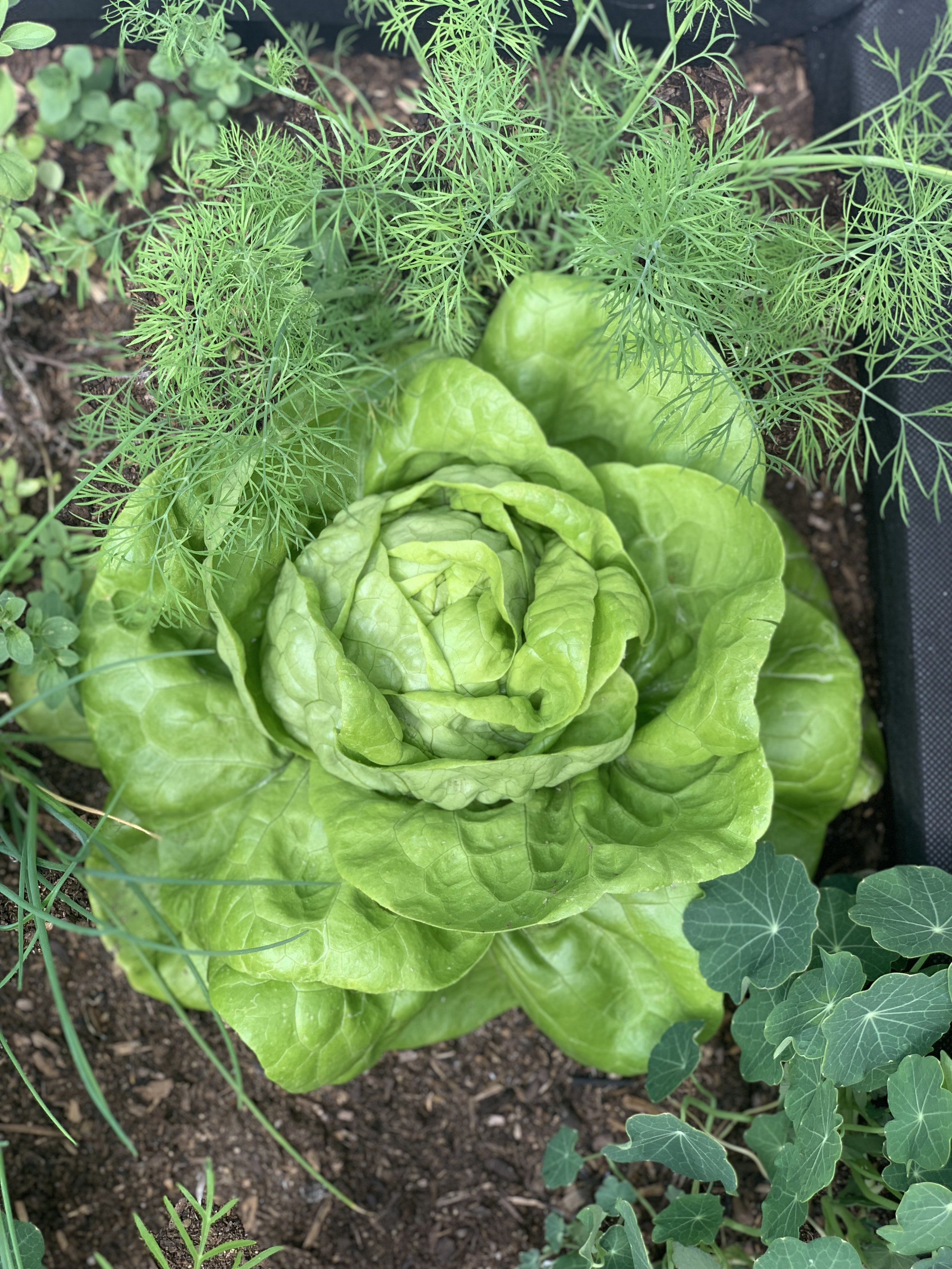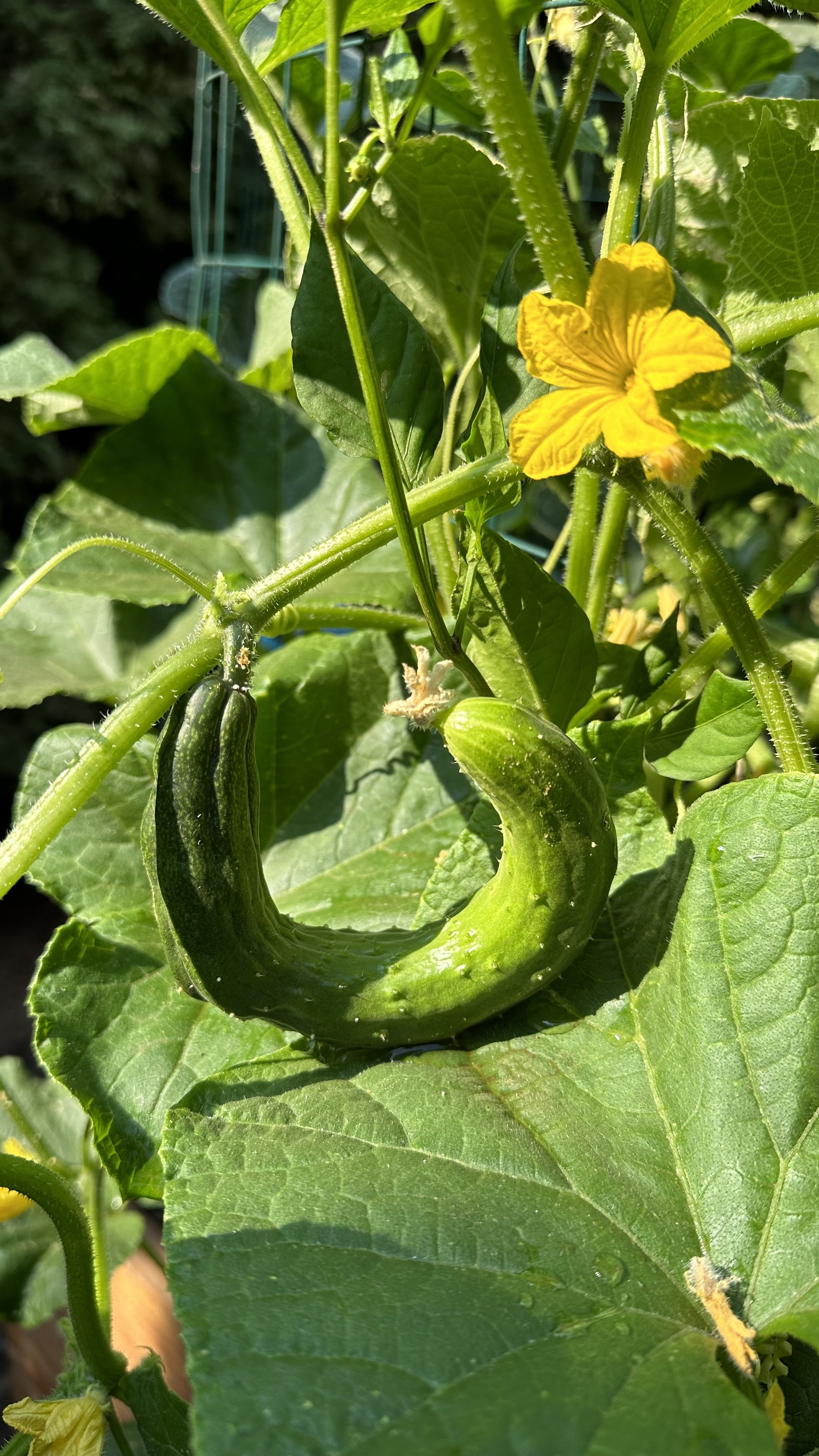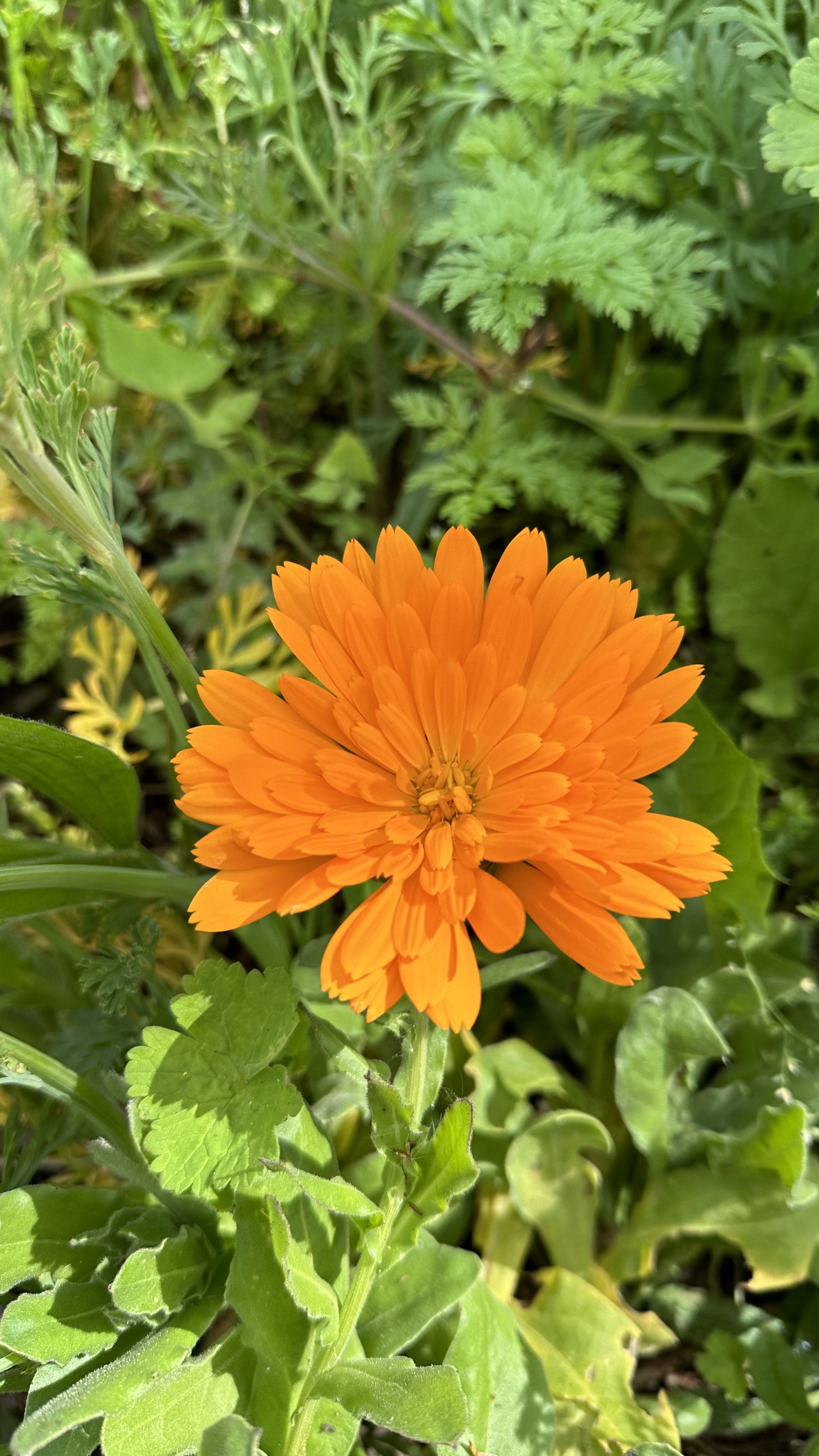The Best Companion Plants for Dill
This website is reader-supported - thank you! This post may contain affiliate links. As an Amazon Associate, I earn from qualifying purchases at no extra cost to you.
If you're like me, trying to get the most out of your garden both in terms of beauty and productivity, then you’ve probably considered companion planting.
Today, I'm zooming in on one of my favorite herbs: dill.
Not only does dill add fantastic flavor to dishes, but it's also a stellar companion in the garden.
By mastering companion planting with dill, you can significantly enhance the health and productivity of your garden.
This guide will cover various dill companion plants and provide insights into effective pairings that promote a vibrant and thriving garden.
Discover the best plants to grow alongside dill and how these strategic combinations can benefit your garden.
To learn more about growing dill, check out my guides:
Top Companion Plants for Dill
Incorporating dill into your garden isn't just about enhancing its biodiversity; it's about strategically partnering it with plants that can mutually benefit from each other's presence.
Here are some of the top companions for dill and why they make such great partners:
Cucumbers
Pest Control:
Dill attracts beneficial insects such as parasitic wasps and ladybugs which help control pest populations that often target cucumber plants, like cucumber beetles.
The learn more about growing cucumbers, check out my guide: A Guide to Growing Perfect Greenhouse Cucumbers.
Here are the cucumber seeds I recommend:
Tomatoes
Enhanced Protection:
The presence of dill helps deter tomato hornworms, which are detrimental to tomato plants.
To learn more about growing tomatoes, check out my guides:
Quick Homemade Tomato Fertilizer
Leggy Tomato Seedlings: Causes and Solutions
Here are the tomato seeds I recommend:
Onions
Shared Benefits:
Both dill and onions have strong scents that repel a variety of pests, making them less likely to suffer from infestations when planted together.
Soil Health:
Onions can help deter soil-borne pests, benefiting the dill planted nearby.
To learn more about growing onions, check out my guide: Onion Companion Plants: Creating a Natural Ecosystem.
Here are the onion seeds I recommend:
Brussels Sprouts
Pest Repellent:
Dill is known to repel many pests that commonly affect Brussels sprouts, such as aphids and cabbage loopers.
Attracts Beneficial Insects:
The insects attracted by dill, especially parasitic wasps, help control pests that typically target Brussels sprouts.
To learn more about growing Brussels sprouts, check out my guide: Companion Plants for Healthy Brussels Sprouts.
Here are the Brussels sprouts seeds I recommend:
Lettuce
Microclimate Creation:
Dill plants can provide light shade to lettuce, which prefers cooler temperatures during the hot parts of the season, helping to prevent bolting (premature flowering).
To learn more about growing lettuce, check out my guides:
Here are the lettuce seeds I recommend:
Asparagus
Seasonal Synchronicity:
Dill and asparagus have complementary growing seasons.
Dill can be planted alongside asparagus in the spring when asparagus spears are harvested.
Pest Management:
Dill helps keep away common pests that bother asparagus, thus promoting healthier growth.
To learn more about growing asparagus, check out my guide: The Best and Worst Companion Plants for Asparagus.
Here are the asparagus seeds I recommend:
Flowers like Marigolds and Nasturtiums
Aesthetic and Functional Harmony:
Planting dill with flowers such as marigolds and nasturtiums can create a visually appealing garden space that also functions as a robust pest management system.
Dual Pest Control:
Both marigolds and nasturtiums have their own pest-repellent properties, which complement dill’s ability to attract beneficial insects.
Here are the marigolds I recommend growing:
Herbs like Basil and Chives
Mutual Benefits:
Herbs like basil and chives can benefit from dill's ability to attract pollinators and repel pests, while their own aromatic properties can further enhance the protective environment against insects.
Flavor Profiles:
Growing these herbs together can help intensify their flavors, which is a boon for culinary enthusiasts who use fresh herbs from their garden.
Here are the basil seeds I recommend growing:
For more herb garden tips, check out my guides:
How to Start a Raised Bed Herb Garden
Why Choose Dill as a Companion Plant?
Dill isn't just a tasty herb used in the kitchen; it's also incredibly beneficial in the garden, especially when used as a companion plant.
Here's why incorporating dill into your garden can be a game changer:
Attracts Beneficial Insects
One of the most significant advantages of growing dill is its ability to attract a variety of beneficial insects.
These insects not only help by pollinating the plants but also play a crucial role in the natural pest management system within your garden:
Parasitic Wasps:
These tiny warriors are attracted to dill's umbel flowers.
They lay their eggs inside garden pests like caterpillars and aphids, which their larvae then consume from the inside out.
Ladybugs:
Known for their appetite for aphids, ladybugs find dill's environment ideal for hunting.
A single ladybug can eat dozens of aphids a day, providing natural pest control.
Learn more about ladybugs in my guide: Flowers That Attract Ladybugs For Natural Pest Control.
Hoverflies:
The larvae of hoverflies are effective at controlling populations of aphids and other pests.
Adult hoverflies are also pollinators, so their presence benefits the overall health of the garden.
Companion Plant Harmony
Dill can coexist harmoniously with many plants, creating a symbiotic relationship where each plant supports the others' needs:
Shade and Support:
Dill's tall, slender stalks can provide mild shade and wind protection for lower-growing plants that thrive in less intense sun.
Here are my favorite dill seeds for planting:
For more herb garden tips, check out my guides:
Dill makes an excellent companion for tomatoes.
Companion Planting Tips for Dill
When integrating dill into your garden as a companion plant, the arrangement and management of planting can have a big impact on the success of your plants.
Here are some essential tips to help you get the most out of companion planting with dill:
1. Strategic Placement
Edge Planting:
Consider planting dill along the edges of your garden beds.
This placement allows dill to attract beneficial insects effectively without overcrowding other plants.
Sunlight Considerations:
Dill thrives in full sun but can tolerate partial shade.
Place dill where it won’t cast too much shade on sun-loving companion plants like tomatoes.
2. Timing Matters
Succession Planting:
Dill grows relatively quickly and can be planted in successions.
Plant new seeds every few weeks to ensure a continuous supply of dill throughout the growing season, which also means ongoing support for companion plants.
Learn more with my guide: What is Succession Planting? Grow More in Less Space.
Synchronize with Companion Growth Cycles:
Plant dill when setting out young transplants of companion plants so that they grow up together, optimizing the benefits of pest control and growth support.
3. Avoid Competition
Space Adequately:
Ensure that dill and its companion plants have enough space to grow without competing for root space and nutrients.
This is particularly important with plants that have similar root depths, like dill and carrots.
Avoid Similar Family Plants:
Refrain from planting dill too close to plants from the carrot family (like parsley and carrots) to prevent cross-pollination and competition for similar nutrients.
4. Watering Techniques
Moderate Watering:
Dill does not like soggy soil.
It’s important to provide a watering routine that meets its needs but does not over-water companion plants that may require more moisture, like cucumbers.
Drip Irrigation:
Using a drip irrigation system can help manage varying water needs, ensuring that each plant receives the right amount of water at the root level without overhead sprinkling, which dill does not favor.
Here is the drip irrigation system I recommend using:
5. Mulching and Fertilization
Mulch Wisely:
Applying a light layer of mulch around dill can help retain moisture in the soil and suppress weeds, benefiting both dill and its neighbors.
However, avoid heavy mulching directly over dill’s root area to prevent moisture buildup.
Balanced Fertilization:
Since dill is not a heavy feeder, it’s crucial to balance fertilization in your garden.
Use a mild, organic fertilizer that won’t overwhelm dill but will satisfy the nutritional needs of more demanding companions like tomatoes.
Here is the fertilizer I recommend using:
6. Monitoring and Maintenance
Regular Checks:
Keep an eye on the health of your dill and its companions.
Early detection of any issues like disease or pest infestation can prevent them from spreading and ensure the health of your entire garden.
Pruning and Harvesting:
Regularly harvesting dill not only provides you with fresh herbs but also encourages new growth and prevents it from overshadowing other plants.
For more herb garden tips, check out my guide:
Cucumber is a great companion plant with dill.
Common Mistakes to Avoid in Companion Planting with Dill
1. Overcrowding
Issue:
Dill grows tall and bushy.
Planting it too close to other plants can lead to overcrowding, which can inhibit airflow and light, essential factors for healthy plant growth.
Solution:
Ensure adequate spacing between dill and its companions.
A good rule of thumb is to keep at least 12-18 inches of space between dill and medium to large plants like tomatoes or cabbage.
This spacing allows all plants to access sufficient sunlight and air circulation.
2. Incompatible Plant Pairings
Issue:
Not all plants are beneficial to grow near dill.
For example, dill can inhibit the growth of some plants like carrots and cilantro due to root competition.
Solution:
Avoid planting dill near plants from the carrot family, such as carrots, parsley, and cilantro, as they can compete for resources and may cross-pollinate.
3. Ignoring Plant Maturity
Issue:
Dill can grow quite quickly and may overshadow smaller, less mature plants, potentially stunting their growth.
Solution:
Plan the planting schedule so that dill and its companion plants reach maturity harmoniously.
Consider starting dill seeds indoors and transplanting them when other garden plants are more established.
4. Neglecting Pest Management
Issue:
While dill attracts beneficial insects, it can also attract pests, especially if it is overgrown or unhealthy.
Solution:
Regularly monitor dill plants for signs of pest infestations.
Keep the area around dill well-maintained to avoid creating habitats for pests.
Remove any unhealthy or excessively old dill plants that may no longer be effective at pest control.
5. Improper Watering Practices
Issue:
Dill prefers drier soil conditions compared to many other garden vegetables and herbs.
Overwatering can lead to root rot and other moisture-related diseases.
Solution:
Use watering practices that accommodate the needs of both dill and its companion plants.
For gardens with varied watering needs, consider using drip irrigation to target water directly to the roots of thirstier plants without overwatering dill.
6. Forgetting to Harvest
Issue:
If dill is allowed to grow without regular harvesting, it can quickly become too large and shade out other plants.
It can also go to seed early, reducing its usefulness in the garden.
Solution:
Regularly harvest dill to keep it manageable and encourage a continuous supply of fresh herbs.
This practice helps maintain the size of the dill and prevents it from overshadowing or competing with companion plants.
My homegrown lettuce, grown with dill as a companion plant.
Quick FAQs
Can I plant dill with carrots?
It’s best to avoid planting dill directly with carrots because they can potentially stunt each other's growth.
Both plants belong to the same family (Apiaceae), and their close proximity can lead to poor seed production and reduced vigor.
How much water does dill need when planted with other companions?
Dill prefers somewhat dry conditions compared to many other garden vegetables.
It should be watered deeply but infrequently, allowing the soil to dry out somewhat between watering sessions.
This method helps prevent diseases such as root rot.
When dill is planted with moisture-loving companions like cucumbers, consider using a drip irrigation system that targets water to the roots of each plant based on their specific needs.
Is dill good for container gardening with other herbs?
Yes, dill can thrive in containers alongside other herbs, provided each plant has enough space and soil to flourish without overcrowding.
Containers are a great way to control growth and prevent competition for resources.
Just ensure that the container is deep enough to accommodate dill’s taproot and that it has adequate drainage.
Here is the container I recommend:
What should not be planted near dill?
Avoid planting dill near carrots, cilantro, and lavender.
These plants can interfere with dill’s growth or lead to cross-pollination issues, especially with carrots and cilantro.
Dill can also compete with these plants for space and nutrients if they are too close.
Is dill a good companion plant for tomatoes?
Yes, dill is a beneficial companion for tomatoes, especially in the early stages of growth.
Dill attracts beneficial insects that prey on common tomato pests like tomato hornworms.
However, as both plants mature, dill should be kept at a moderate distance from tomatoes because mature dill can inhibit tomato plant growth once it becomes fully established and larger.
Is dill a good companion plant for cucumbers?
Absolutely! Dill is an excellent companion for cucumbers.
It helps attract beneficial insects such as predatory wasps, which control pests that often target cucumber plants, including cucumber beetles.
Marigolds make excellent companion plants for dill.
Incorporating companion planting dill strategies into your garden isn’t just about boosting the productivity of your plants—it’s a form of home improvement that enhances your entire outdoor space.
By thoughtfully selecting dill companion plants, you create a more balanced and self-sustaining garden ecosystem right at home.
These companion planting tips can transform your garden into a more vibrant, pest-resistant, and flourishing part of your home.
Remember, a little planning and the right plant friends for your dill can go a long way in nurturing a thriving garden that beautifies your home and brings joy to your table.
Pin this post to save for later!
















































